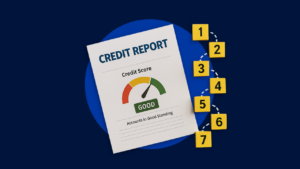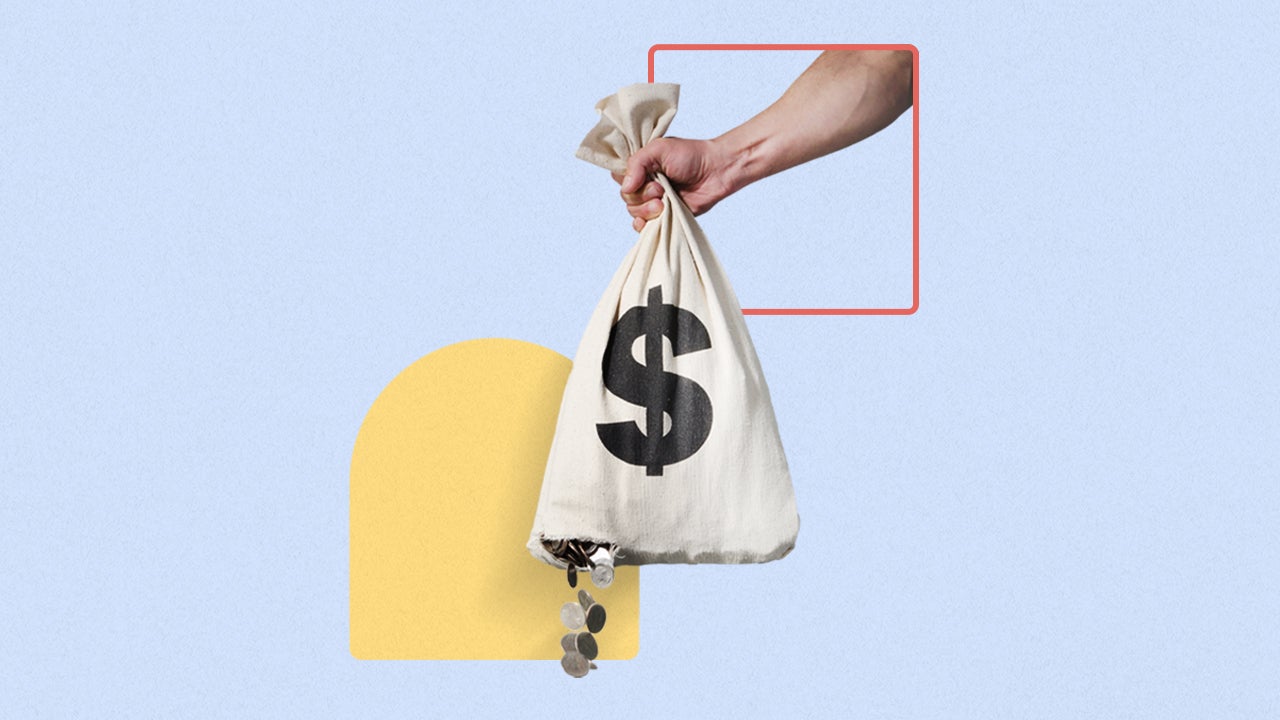Tips for recovering from bankruptcy that you can start working at now

Key takeaways
- Although bankruptcy will create financial challenges in the future, there are still steps you can take to help reestablish your credit profile.
- To get your credit score to a good place, pay your bills on time and look at other methods like opening a secured credit card or having your utility payments reported to credit bureaus.
- Building a budget and setting up an emergency fund can prevent you from relying on credit in the event of financial setbacks or unexpected expenses.
Filing for bankruptcy can feel like hitting rock bottom. While it wipes out your old debt, bankruptcy stays on your credit report for seven to 10 years, hurting your long-term chances of qualifying for a mortgage or other credit.
After bankruptcy, you must reestablish your credit profile, build good credit and manage your cash flow efficiently to avoid falling down the same pitfalls that lead to your initial bankruptcy filing.
With due diligence and intelligent financial planning, you can recover from bankruptcy. Here are some tips you can implement today to improve your financial outlook.
Save all paperwork from your bankruptcy case
Keeping any paperwork from your bankruptcy case is always a good idea. You may be asked for copies of the bankruptcy files in the future, especially when applying for a mortgage, loan or other financial products.
“If a lender or debt collector contacts you in the future about any of the debt included in your bankruptcy filing, it’ll be helpful to have your paperwork on hand,” says debt attorney Leslie Tayne, founder of Tayne Law Group. “In addition, if a debt collector contacts you about a debt you thought was discharged in bankruptcy, you have on-hand proof.”
Keep any of the following paperwork:
- Bankruptcy petition and schedules
- Proof of income that was included with your petition
- Correspondence from the bankruptcy court, your attorney and the bankruptcy trustee
- Final bankruptcy discharge
Remember that bankruptcy cases can last for years. Keeping your paperwork ensures you have a complete record of the case, which might be needed to reference specific details, especially if any disputes or questions arise after the bankruptcy has been finalized.
Start saving and build an emergency fund
To ensure history doesn’t repeat itself after you file for bankruptcy, you must establish good financial habits. One of your first priorities should be to open a savings account for financial emergencies. If you lose your job or face unexpected financial needs, having an emergency fund can help you avoid a disastrous outcome that lands you back in debt.
“Knowing how to manage your money is an integral part of the rebuilding process,” says Tayne. “Prevention is the best medicine, and saving money creates healthy financial habits for your present and future.”
Some employers allow you to direct a percentage of your paycheck to a separate account. In addition, some banks and credit unions also allow you to create recurring, automatic transfers from a checking account to a savings account.
The deposits will add up over time and making regular contributions, no matter how small, will help you establish the habit of saving.
Here are some options for where to save your emergency fund.
- A savings account with a higher interest rate: Online banks are a good option because they typically offer higher yields than brick-and-mortar banks with quick and easy access to funds.
- A high-yield savings account: Similar to a standard savings account, a high-yield savings account pays a much higher yield on the balance in your account. Look for banks or credit unions that insure deposits through the FDIC or NCUSIF.
Tayne says this money is particularly important after filing for bankruptcy because you will have limited access to credit.
Build a budget
Next, you’ll need a spending plan that can help you achieve future financial goals. Establishing a budget can provide insights into your habits and prevent your spending from getting out of control again.
You’ll first need to calculate your income to understand how much money you can spend and save each month. Base your income projections on recurring, reliable monthly amounts.
You can then take a few more steps to nail down your budget:
- Track your spending for one to two months: This can help you determine how much to budget for various categories.
- Identify your financial priorities: Focus on what’s most important — paying off remaining debts, building an emergency fund or saving for future goals.
- Create your budget: Develop a detailed budget that tracks your income, expenses and savings. This will help you ensure bills are paid on time and prevent overspending as you rebuild after bankruptcy.
One popular approach to building a budget involves following the 50/30/20 budget rule. This rule allocates 50 percent of your income toward your needs, 30 percent toward your wants and 20 percent to savings. Taking this approach can help you build a realistic monthly budget that focuses on essential living expenses and discourages overspending.
Reestablish good credit
Reestablishing a solid credit score is another essential part of your path to financial recovery after bankruptcy. There are several ways to rebuild your credit, regardless of the type of bankruptcy you file:
- Pay bills on time: Make sure to build a history of responsible payments, which significantly improves your credit score.
- Become an authorized user: Ask a trusted friend or family member to add you as an authorized user on their credit card. Their good credit history can help improve your credit score.
- Co-borrow on a credit card: Apply for a credit card with a co-borrower who has good credit. This allows you to benefit from shared responsibility and good credit habits, making it easier to rebuild your own credit profile.
- Open a secured credit card: Use a secured credit card, which requires a cash deposit as collateral, to make small purchases and pay them off in full each month. This helps rebuild your credit with low risk.
- Have utility bill payments reported: Some services allow you to report utility and rent payments to credit bureaus, which can boost your credit score if you consistently pay these bills on time.
Regularly monitor your credit reports
Your credit report contains detailed information about your credit history, including payments, balances and open accounts, all of which influence your credit score. Regularly checking your credit report ensures that all the information is accurate and up to date, which is vital for improving your score over time.
“If the discharged debt isn’t showing up accurately on credit reports, it could count against you as a form of outstanding debt,” says Tayne.
Keeping an eye on your credit report also allows you to spot signs of potential identity theft or fraud. If unfamiliar accounts or transactions appear, it could indicate that someone else is using your personal information to open accounts or make purchases in your name. Early detection of fraudulent activity enables you to take swift action by contacting the credit bureaus and filing disputes.
Maintain a reliable income source
Keeping your job is essential to rebuilding your financial profile after bankruptcy. Show lenders that you can repay debts such as your mortgage and maintain a steady income stream through employment.
Many lenders consider your employment history when reviewing applications. Having a consistent income improves your chances of being approved for future loans. On the other hand, job hopping or gaps in employment can make you look like a risk.
Set financial goals
Goals give you direction, helping you prioritize your spending, saving and investing habits in a way that aligns with what’s most important to you, whether it’s paying off debt, building an emergency fund or saving for retirement.
“Making good decisions about finances and managing cash flow is the best way to secure your financial future,” said Tayne.
Financial goals also provide a sense of purpose and control, helping you stay focused on your long-term vision while maintaining discipline with your day-to-day finances.
The bottom line
Recovering from bankruptcy is a challenging but achievable process that requires patience, discipline and a proactive approach. By focusing on critical steps like creating a realistic budget, rebuilding your credit with responsible habits and setting clear financial priorities, you can start working toward a healthier financial future.
Frequently asked questions
Why we ask for feedback Your feedback helps us improve our content and services. It takes less than a minute to complete.
Your responses are anonymous and will only be used for improving our website.






